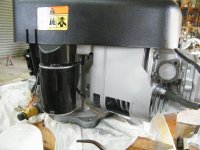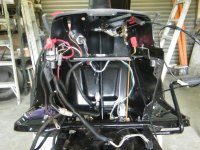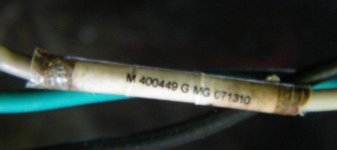I think some of the difference comes down to how the 2 machines are wired.
This Murray (white wire) has to pass through the two safety switches before it goes to the solenoid terminal to trigger it. One of those safety switches could be contributing to the voltage difference when a load is applied.
Disconnect the plugs so the rider will only crank. Set meter to the mV setting. Place you meter leads with one clipped to the battery positive, and then begin at the start solenoid white wire, crank and watch the meter reading. That will show you the true drop of the circuit. Work your way back following the diagram and check each pin at the safety switches. When the meter does not show a drop, go to where it does and there is your problem. If it still shows a considerable drop, it will be on B terminal part of the harness or its connectors/ connections.
Do the same for B terminal feed wire side, both sides of the fuse holder to verify the problem is not with a poor fuse holder pin. I'm still suspicious of that switch power supply wire and it's crimp connections. The power wire to the key switch is connected piggyback to the main battery positive terminal. Corrosion creeps in these and it will mess with the connections that even seem tight. Loosen clean and retighten the power wire and positive cable.
Corroded pins, a bad crimp or the switch itself will be the three suspects.
You would need the product label information off the Husqvarna to get a correct wiring diagram to see the differences. But I think you will pin the problem down doing the voltage drop test method described.
This method of testing seems tedious until you get used to it, but it will become second nature pretty quickly when dealing with issues like this. Ohm testing just tells you there is a wire there. Voltage drop testing tells you if the wire can actually carry a load without dropping it.
Hope this helps you.
There is a guy on You Tube named Dan Sullivan who is a Master Equipment Technician, and he goes into great detail about voltage drop testing. He has a semi-sour personality, but he knows electrical diagnostics from all directions possible.




